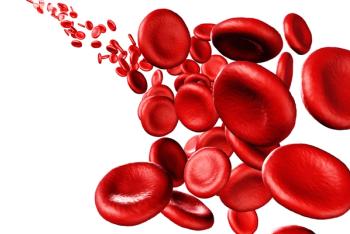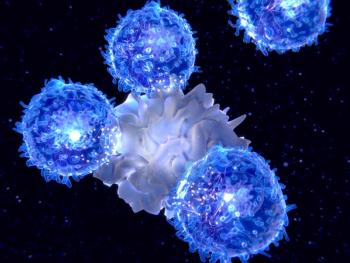
Patients with Hematologic Disease and Symptomatic COVID-19 Infection See Worse Prognosis

Patients with hematologic disease and a symptomatic COVID-19 infection were found to have a significantly worse prognosis than patients who were nonhematologic with COVID-19.
A study published in Cancer found that patients with hematologic disease and a symptomatic coronavirus disease 2019 (COVID-19) infection have a significantly worse prognosis than patients who are nonhematologic with the disease.
Even further, those on active hematologic treatment and those with more severe respiratory syndrome at COVID-19 presentation show the worst prognosis. Given these findings, researchers recommended that all patients who are hematologic be advised to seek medical attention at the earliest appearance of dyspnea and/or signs of respiratory infection.
“Moreover, a careful risk-benefit analysis may be useful for determining whether some highly immunosuppressive treatments that are not lifesaving, such as maintenance immunotherapy for indolent diseases, could be safely deferred temporarily during the peak of the viral pandemic,” the authors added.
In this study, researchers evaluated 102 patients with COVID-19 symptoms and a nasopharyngeal swab positive for severe acute respiratory syndrome coronavirus 2 (SARS-CoV-2) seen at 2 hematologic departments located in Lombardy, Italy, during March 2020. Comparing patients with COVID-19 and the standard hematologic population managed at the same institutions in 2019, researchers determined the risk factors for acquiring COVID-19. Additionally, 30-day survival was compared with the survival of matched uninfected control patients with similar hematologic disorders and patients who were nonhematologic and affected by COVID-19.
COVID-19 was found to be significantly more prevalent in male patients. However, the infection occurred across all different types of hematologic disease; though the risk of COVID-19 infection was lower for patients with chronic myeloproliferative neoplasms, including chronic myeloid leukemia, and higher for patients with immune-mediated anemia on immunosuppressive-related treatments.
The 30-day mortality rate for patients with hematologic disease was 39.2% compared to 23.5% for patients who were nonhematologic with COVID-19 (P = .02) and 3% for uninfected hematologic controls (P < .001).
“It should be noted that subjects with asymptomatic COVID-19 were not traced in this study because nasopharyngeal swabs for SARSCoV-2 detection were not routinely performed for our patients,” the authors explained. “Therefore, the exact frequency of infection in hematologic patients could not be ascertained, and the mortality rate may have been lower if asymptomatic patients had been traced.”
Notably, the severity of the respiratory syndrome at presentation and active hematologic treatment were independently associated with a worse prognosis. However, neither diagnosis nor disease status affected the prognosis. Overall, the worst prognosis was observed among those on active hematologic treatment and those with more severe respiratory syndrome at COVID-19 presentation.
“The need for oxygen supplementation from the early onset of infection, traced in our study, represented the most important COVID-19–related parameter and retained independent adverse prognostic significance in the multivariate analysis,” the authors wrote. “Therefore, during the COVID-19 pandemic, hematologic patients should seek medical care at the earliest signs of dyspnea, respiratory symptoms, or peripheral oxygen saturation impairment to allow timely management of their infection.”
Importantly though, the heterogeneity of treatments given to patients affected by a variety of hematologic disorders in various phases of their disease course did not allow the researchers to more precisely define the potential role played by specific treatments in the course and outcome of COVID-19. Therefore, more in-depth studies with larger patient cohorts are necessary to fully determine the interaction between the therapeutic agents commonly used in patients with hematologic disease and SARS-CoV-2 infection.
Reference:
Cattaneo C, Daffini R, Pagani C, et al. Clinical Characteristics and Risk Factors for Mortality in Hematologic Patients Affected By COVID-19. Cancer. doi: 10.1002/cncr.33160
Newsletter
Stay up to date on recent advances in the multidisciplinary approach to cancer.























































































